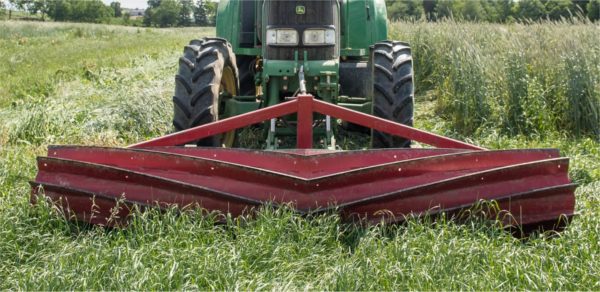Rodale Institute’s Executive Director and farmer Jeff Moyer answers your farming questions about tillage.
Tony asks:
I am taking over a 10-acre field that was planted in winter wheat last year (harvested last summer). I would like to plant a hay crop (orchard grass and clover for cow hay) and would like to do it without spraying. Would you recommend a tillage, say disking, and then drilling the orchard grass seed mix?

Jeff says:
I’m going to assume here that the straw was raked and baled off after harvest so that the field was left relatively free from the previous crop’s residue. I’m also going to assume that some weeds have germinated from the time the wheat was removed until the present.
If all of this is true, then to try starting any hay crop without chemicals, tillage, or nurse crops will most likely end in failure.
If you want to get any type of hay started in the spring organically, it’s best to do it with a nurse crop. In your case, that probably means a full regimen of tillage, then planting oats with the hay crop. The oats will germinate quickly and protect the young hay seedlings from weed pressure early in the season. By July, you’ll have three options: harvest the oats as grain, cut them when they begin to head out as green chop, or simply mow them off periodically until the hay is established.
If you don’t mind some grain stubble mixed in, you might be able to get one cutting from this planting by late August or early September.
The big problem we have with spring establishment of these hay crops in clear seedings is weed pressure. In spring, every weed in the book wants a shot at growing. Hay crops (either grass, alfalfa, or clove) are perennial, so they tend to start slow out of the gate, making them poor competitors.
I know it sounds like a lot of work, but I would favor tillage and using a nurse crop. The other option would be to grow some other crop (almost anything), then plant wheat again in the fall. Then, late next winter or early spring, frost seed the hay crop into the already established wheat. The freezing and thawing of the soil pulls the small-seeded hay crop into the soil, and the wheat acts as the nurse crop.
Hope this helps, and good luck!
